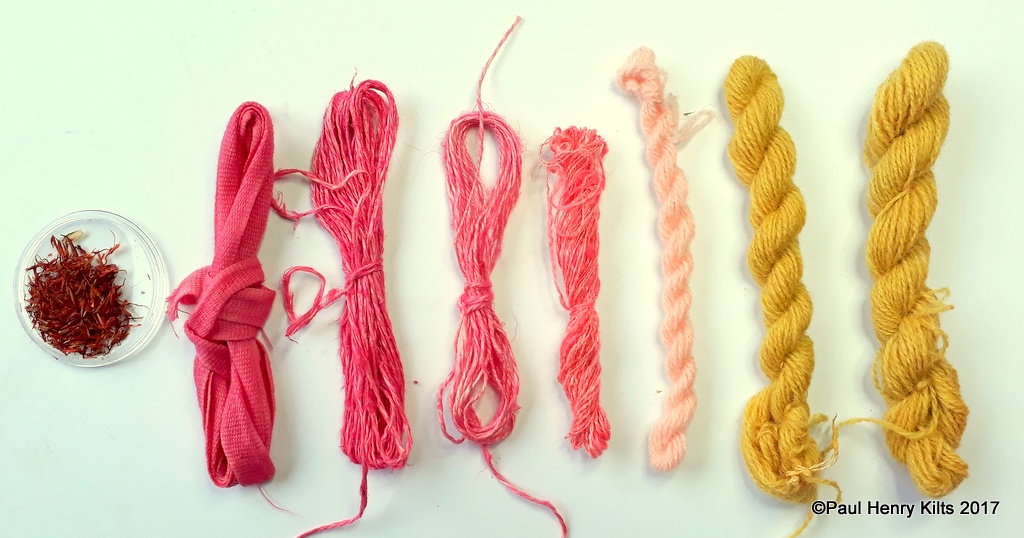Safflower is often called false saffron, it looks a little like true saffron, and does impart colour in cooking, but little else than that, certainly none of the wonderful saffron taste. I know that it produces oil from the seeds and can also be used as a dye, but that it is fairly fugitive, so in many ways really only for something temporary. Another of it’s unusual properties is that with careful pH manipulation it can go from a rather nondescript yellow on wool, to wonderful bright pinks on silk, linen, and cotton. In fact when cotton tape is dyed with safflower the result is “red tape” that wonderful legal item, that binds important and pressing documents together.
I was given a large pot of it from a friends travels so it seemed a perfect time to give it a try.
First the petals need to be soaked and rinsed a few times to remove most of the yellow colouring, this can be kept and used, but with so many other far more satisfying yellows from a huge range of other plants, I’m not sure why you would!
With the washed petals the pH needs to be increased dramatically to pH 10 -11 with washing soda, or any strong alkali, and left in solution for about an hour or so, the petals will all turn soft and brown, but keep stirring every so often to convert as much as possible. Strain the solution and then add vinegar or citric acid to neutralise and in fact turn it slightly acid as well to something like pH 6
The magic now happens, simply use the dye solution cold, no heating required and soak silk, linen or cotton for at least an hour, or perhaps even overnight. No mordant is needed, stirring when you can, or when you remember
The cotton and linen will take on a wonderful clean pink, and the silk a slightly more coral version, wool however barely colours, perhaps if you are lucky a very delicate baby pink.

There is a technique where you use cotton fabric as a sacrificial /interim method, where after you have got pink cotton, you then re soak it in alkali to remove the pink, remove the cotton, re acidify the bath and then dye silk to get pink. I can’t say if it works, but it’s a clever idea, however a little bit of cochineal to my mind seems a much easier way of going about getting pink silk, and although it might be a little more expensive there is very little procedure and messing about, and not least the cochineal is permanent as well!

i also performed experiments with safflower extracts on silk fabric using modren methods and found a variety of shades. it is a wonderful article. But i failed to get pink shade. A nice little work